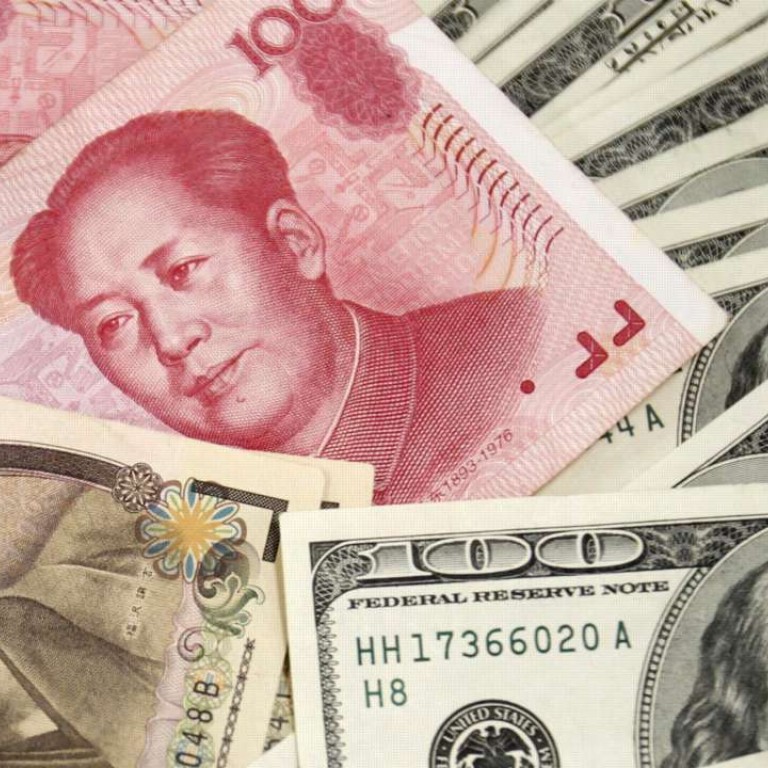
Markets divided on yuan’s direction
But PBOC expected to refrain from supporting currency further and allow its continued depreciation, after recent inclusion in the IMF’s currency basket
The continued weakening of the yuan, well after China’s weeklong national holiday, has rekindled market concerns about the strength of the currency.
While some analysts believe it is still in a long-term trend of depreciation, with further weakening expected next year, others expect to see higher volatility, without too much room for further downward movement.
The yuan has fallen seven days in a row against the US dollar in both onshore and offshore markets. The exchange rate against the greenback broke above 6.70 after the national holiday.
In the past week, onshore yuan fell 0.8 per cent against the greenback, while the dollar index rose 2.8 per cent in the past fortnight
The reference rate of the yuan against the US dollar set by the People’s Bank of China (PBOC, the central bank) has been in a steady decline, to 6.7379 on Monday from 6.6778 before China’s “golden week”.

Onshore yuan was trading at 6.7326 against the US dollar in Shanghai on Monday morning, and offshore yuan at 6.7428 in Hong Kong.
This recent performance has raised particular market concerns as there has been wide speculation the PBOC would refrain from supporting the currency further and allow depreciation to continue after its inclusion in the International Monetary Fund’s (IMF) new Special Drawing Right (SDR) currency basket, on October 1.
“The recent depreciation is primarily caused by the rise in the US dollar index as the prospect of a Fed interest rate rise strengthens,” said Hong Hao, managing director and chief strategist at Bocom International in Hong Kong.
The dollar index, the measure of the strength of the greenback, fluctuated around 98 in the morning session on Monday, a significant rise on its October 3 level of 95.4675.
“We maintain our forecast for the yuan at 6.8 against the dollar by the end of this year, but it will continue to face heavy pressure next year, probably weakening by another 10 per cent,” said Hong.
Stephen Innes, a senior trader at Oanda, agreed, adding the yuan faces considerable headwinds as we enter the final months of 2016 and it could even experience larger depreciation.
The recent depreciation is primarily caused by the rise in the US dollar index as the prospect of a Fed interest rate rise strengthens
Steeper yield curves in the G3 currencies will also weigh on the currency, said Innes, adding to its struggles against a strengthening US dollar as we approach December.
“Traders are treading water with trepidation,” he added.
Despite the recent sharp weakening, however, some analysts say the room for any further weakening is limited. More likely, the currency will see higher volatility, instead of a depreciation trend.
The weaker exchange rate set by the PBOC in the past week is more likely to have been due to the broad strength of the US dollar, as the dollar index now stands at a seven-month high, according to the latest report from Macquarie Securities.
Due to improvements in US economic fundamentals, the dollar index may continue to hover at a high level, likely to hit 102-103, said Zhao Qingming, the chief economist at China Financial Futures in Beijing.
“However, as US economic growth this year is expected to be about 2.1 per cent, compared with an average 2.4 per cent over the past three decades, and the labour index is also falling, I don’t see any possibility of the dollar index rising above 105 in the foreseeable future,” said Zhao.
That echoed the views of Wang Youxin, an analyst at Bank of China, who said in a recent research note that the yuan is in a retaliatory depreciation phase, following the government’s intervention to support the currency before its formal inclusion into the IMF’s SDR basket.
“There isn’t sufficient momentum for any further weakening, added Xu Hanfei, chief fixed-income analyst at Guotai Junan Securities.
After a short period for releasing accumulated depreciation pressure, Xu expects the exchange rate to stabilise gradually but added it is unlikely to fall below 6.8 by the end of this year.
Larry Hu, an analyst at Macquarie Capital Ltd in Hong Kong, expects to see higher yuan volatility but not a trend of depreciation.
As the trajectory of the US dollar is highly uncertain, we maintain our forecast for the exchange rate of the yuan against the US dollar at 6.6 by the end of 2016, and most likely, the yuan will end this year in the range of 6.6-6.8, said Hu.
